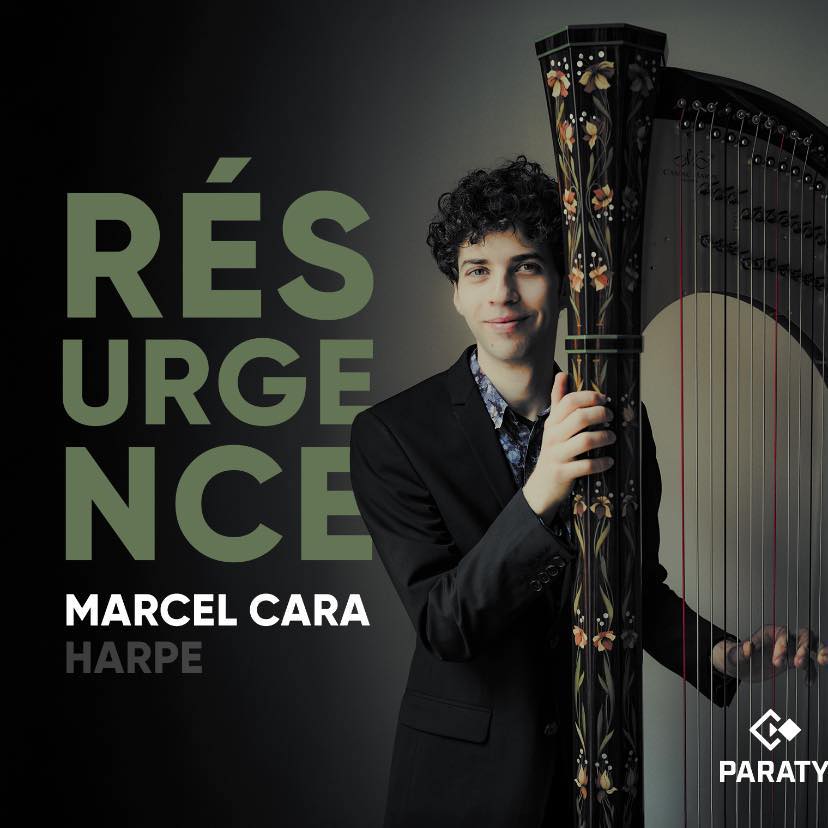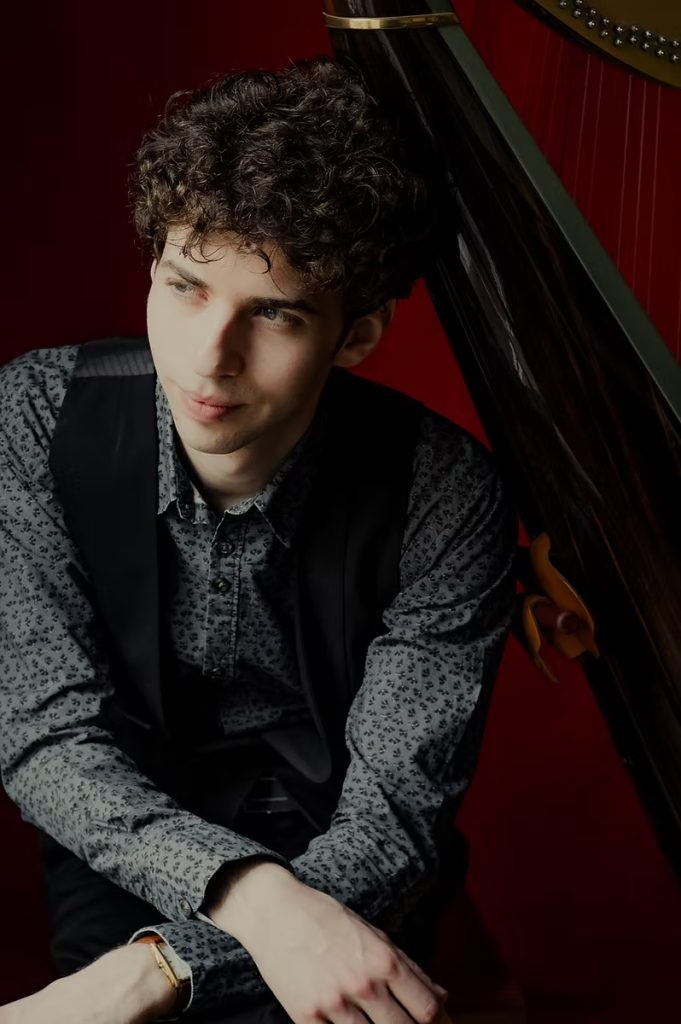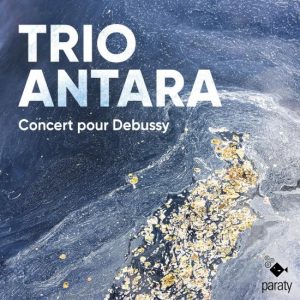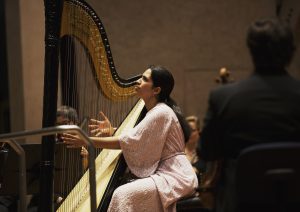Camac Blog
“An extramusical trance”: Marcel Cara and Résurgence
News
March 21, 2025

“Résurgence” marks the debut recording of Marcel Cara. His style is rich in nuance and expressiveness, drawing listeners into a captivating sound world. This program explores the development of the harp in the 20th and 21st centuries, featuring works by Marcel Tournier, Gabriel Fauré, André Jolivet, Bruno Mantovani, and Takashi Yoshimatsu. What truly sets this recital apart, however, are Cara’s own arrangements of several Debussy masterpieces. His interpretation of Debussy’s evocative pieces— “Hommage à Rameau,” “Soirée dans Grenade,” and “La Plus que Lente”—highlights not just his technical mastery but also his intense creativity.
These three Debussy pieces form the centrepiece of the recital; after all, it was Debussy—particularly the Trio Sonata he first heard at age six—that initially inspired him to take up the harp. “The three pieces presented on this disc are the ‘keystone’ of this programme and it would have been unthinkable to realise this project without the presence of one of his works.”
Marcel elaborates on the profound inspiration that Debussy instills in him. “Above all, Debussy is the composer I admire the most. When I listen to his Images for Orchestra l.122 (Ibéria and Rondes de Printemps), I literally find myself in a state that I would describe as an ‘extramusical trance’. I, of course, discovered him in my early years of learning the Sonata for alto flute and harp, then came the works from the solo piano repertoire through the legendary recordings and interpretations of Pollini, Kocsis, etc…”
He is eager to clarify one point:“Strictly speaking, they are not arrangements because I play them according to the original edition by Durand, making only very minor modifications.”
This album also acknowledges the influence of his studies under Isabelle Moretti:
“I was fortunate enough to study under her for five years at the Conservatoire National de Paris, where I worked on one of the works by Debussy included on this album and had the opportunity to discuss the subject at length with her, and more specifically, on the entire body of work of the master of French musical impressionism By working on the original works of the repertoire, I think she tried to convey and develop in me what could be the ‘ears’ necessary for the interpretation of this repertoire.”

Marcel Cara ©Mai TOYAMA 2024
Cara demonstrates the full power of that acute sense of style in this album: he merges Debussy’s innovative modernity with the works of that composer’s contemporaries, as well as much later continuations of his aesthetics. Cara draws together the sultry essence of Soirée in Grenade and the highly visual inspirations from Jean Cras’s Deux impromptus; Tournier’s seminal Sonatine, written between the world wars, evokes feelings of reverie and nostalgia. In contrast, Fauré’s Une Châtelaine en sa tour, like Debussy’s homage to Rameau, imparts a sense of post-romantic sadness, a paean to a world that was on the brink of vanishing utterly. Whereas works like Jolivet’s 1965 Prélude and Mantovani’s Tocar (2007) introduce a more stringent language and a more percussive approach to the harp which have a “dark and obsessive character.”
But what is it about the harp that makes it so apt to express all these ideas?
“I think that resonance is the main aspect of this programme. It is clear that the sound potential of the harp allowed Marcel Tournier and Claude Debussy to best express the impressionist imagination in their works. This principle of resonance is also one of the main characteristics of Debussy’s piano work, where the use of the pedal was revolutionised. […]
Each work here uses a harmonic process based on different resonance groups, a kind of ‘column’ of vibration that repeatedly emphasises the medium-low register of the instrument. This requires the performer to stop the sound immediately only at very rare moments, thus giving the listener time to enjoy each of the different atmospheres.”
But for Marcel Cara, the unifying ideal of this album is Debussy and the lasting power of his creativity:
“It is fascinating that this artistic movement invented almost 120 years ago, still influences art in our time. Debussy is so universal that there is no composer today who has not been somewhat inspired by his musical revolution, his new conception of time and his relationship to timbre. By ‘blurring’ the tonality, he became a model for future composers in the sense of ‘inventor-continuator’ “
Et voilà, the unifying ideals of this collection: innovation and continuity.
Résurgence is available on the Paraty label from March 21, 2025. Buy it here at the Camac online boutique!



